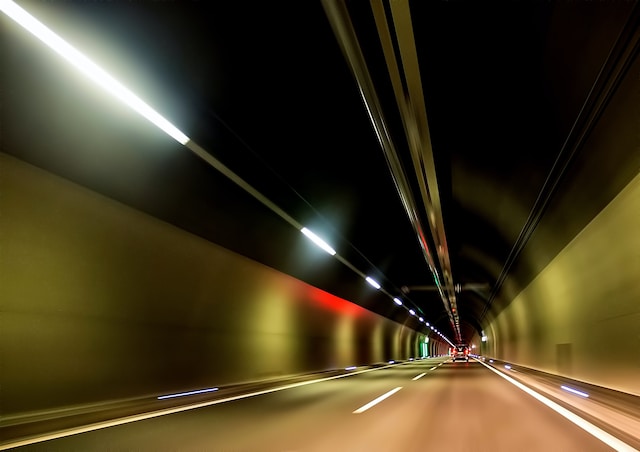In a world increasingly reliant on data-driven solutions, the realm of automotive technology has witnessed a remarkable transformation with the advent of machine vision. This cutting-edge technology, powered by advanced sensors and artificial intelligence, is revolutionizing the way car collisions are analyzed, assessed, and repaired. The marriage of machine vision and collision analysis holds immense promise for enhancing road safety and optimizing the repair process. In this article, we delve into the data-driven future of car collisions, exploring how machine vision offers invaluable insights for auto body shops and insurance companies. With a focus on Vancouver’s auto body shop landscape, we’ll uncover how local businesses are leveraging this technology to streamline their operations.
The Power of Machine Vision in Car Collisions
Machine vision, a subset of artificial intelligence, empowers machines to interpret visual information from the world around them. In the context of car collisions, this technology involves equipping vehicles with advanced sensors and cameras capable of capturing high-resolution images and videos in real-time. According to official statistics from the Canadian Institute for Health Information (CIHI), car accidents in Canada lead to thousands of hospitalizations and deaths annually. The integration of machine vision technology aims to significantly reduce these numbers by providing a more comprehensive understanding of collision dynamics.
Data Collection and Analysis in Real-Time
One of the most remarkable features of machine vision is its ability to collect and analyze data in real-time. During a car collision, machine vision-powered sensors capture a wealth of information, including images, videos, and sensor readings. This data is then processed by sophisticated AI algorithms that can provide immediate insights into the nature and severity of the collision. Such rapid analysis is instrumental in informing first responders, auto body shops, and insurance companies about the necessary actions to take.
Machine Vision’s Role in Precise Damage Assessment
Accurately assessing the extent of damage after a collision is a critical aspect of the repair process. Machine vision’s AI algorithms excel at identifying and categorizing damage based on the collected data. This capability streamlines the workflow of auto body shops by providing a detailed understanding of repair requirements even before the vehicle arrives at the shop. This not only saves time but also ensures that the necessary tools, parts, and expertise are readily available, expediting the repair process.
Estimating Repair Costs with Machine Vision
Another significant advantage of machine vision technology is its contribution to more accurate repair cost estimates. Traditionally, estimating repair costs has been a complex task, influenced by multiple variables. Machine vision’s data-driven insights enable auto body shops to provide customers with more transparent and precise cost estimates. According to data from the Insurance Bureau of Canada, motor vehicle collision claims accounted for billions of dollars in payouts in recent years. By leveraging machine vision, insurance companies can collaborate with auto body shops to streamline the claims process, reducing costs and delays.
Predictive Insights: Anticipating Accident Patterns
The predictive capabilities of machine vision extend beyond individual collision analysis. By analyzing historical data and identifying patterns, this technology can anticipate accident-prone areas and times. With Vancouver’s diverse driving conditions and traffic challenges, such insights hold immense potential for improving road safety. This could lead to targeted interventions and better traffic management strategies, ultimately reducing the frequency and severity of collisions.
Vancouver’s Auto Body Shop: Leveraging Machine Vision for Efficiency
In the heart of Vancouver’s bustling auto body shop scene, establishments like Grandcity Auto Body Shop in Vancouver are embracing the benefits of machine vision. The collaboration between local auto body shops and technology providers like Butterfleye has paved the way for a more efficient collision repair process. By integrating machine vision’s data-driven insights, these auto body shops can assess damage accurately, estimate repair costs transparently, and provide timely services to their customers.
Challenges and Considerations
Implementing machine vision in collision analysis is not without challenges. Factors such as varying lighting conditions, environmental variations, and data privacy concerns need to be addressed. However, technology providers like Butterfleye are continuously advancing their solutions to overcome these obstacles and ensure reliable performance even in diverse conditions.
The Road Ahead: Innovations and Collaboration
Looking ahead, the future of car collision analysis is brimming with innovation and collaboration. Auto manufacturers, insurance companies, and technology providers are increasingly collaborating to harness machine vision’s potential. These collaborations aim to enhance road safety, optimize repair processes, and ultimately create a more secure and efficient driving experience.
Conclusion: Embracing Data-Driven Transformation
In conclusion, the convergence of machine vision and car collisions is reshaping the automotive landscape. The data-driven insights offered by this technology hold the key to reducing accident-related casualties and optimizing repair operations. As Vancouver’s auto body shops join hands with machine vision pioneers, we’re witnessing a promising transformation in the way collisions are understood, assessed, and repaired. With a commitment to innovation and collaboration, the road ahead is illuminated by the potential of data-driven transformation.
